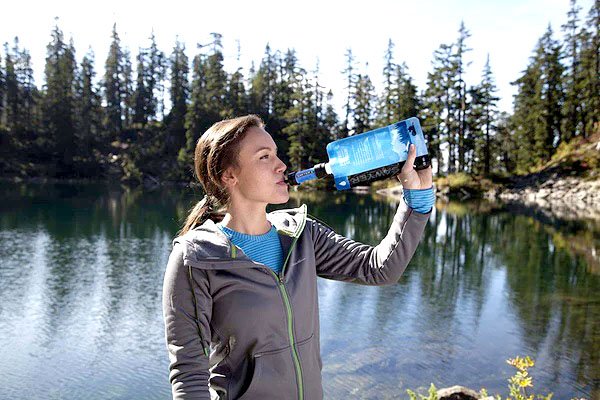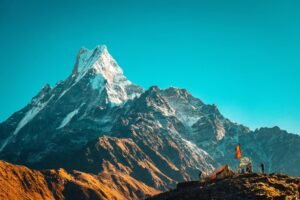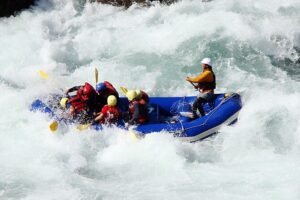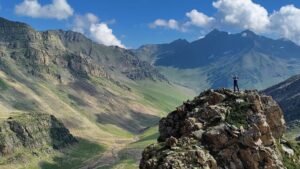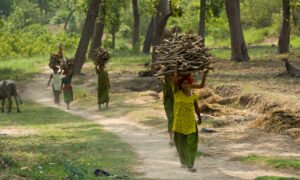When embarking on mountain treks, ensuring access to clean drinking water is paramount. The serene beauty of mountain streams and lakes often belies the presence of harmful microorganisms and contaminants. Drinking untreated water can lead to serious health issues, including gastrointestinal illnesses and dehydration. Therefore, carrying a reliable portable water filter is essential for any mountain trek. This comprehensive article delves into various portable water filters suitable for mountain treks, evaluating their effectiveness, portability, ease of use, and other critical factors.
Importance of Water Filtration
Despite the seemingly pristine appearance of mountain water sources, they can harbor harmful bacteria, viruses, protozoa, and chemical contaminants. Consuming contaminated water can result in health problems such as giardiasis, cryptosporidiosis, and bacterial infections. Moreover, chemical pollutants from agricultural runoff and industrial activities can also pose significant health risks. Portable water filters are designed to remove these contaminants, ensuring safe drinking water and preventing health issues that could derail a trek.
Types of Portable Water Filters
Portable water filters come in various designs and mechanisms, each with its unique advantages and limitations. The main types include:
- Pump Filters
- Gravity Filters
- Straw Filters
- Bottle Filters
- Squeeze Filters
- UV Purifiers
Key Factors to Consider
When selecting a portable water filter for mountain treks, consider the following factors:
- Filtration Capability: The ability of the filter to remove various contaminants, including bacteria, protozoa, viruses, and chemicals.
- Portability: The weight and size of the filter, which affect ease of carrying.
- Ease of Use: How straightforward the filter is to operate, especially under challenging conditions.
- Flow Rate: The speed at which the filter can purify water, impacting the time required to obtain drinkable water.
- Durability: The filter’s robustness and ability to withstand harsh environmental conditions.
- Maintenance: The frequency and ease of cleaning and replacing filter elements.
- Cost: Initial purchase cost and ongoing expenses for replacement filters.
Detailed Comparison of Popular Filters
1.Pump Filters
Example: Katadyn Hiker Pro
Filtration Capability: The Katadyn Hiker Pro is designed to remove bacteria, protozoa, and particulates. It effectively filters out giardia and cryptosporidium, common in wilderness water sources, but is not effective against viruses. It utilizes a glassfiber element and activated carbon core to improve taste and reduce chemicals.
Portability: Weighing around 11 ounces, it is relatively compact and fits easily into a backpack. Its manageable size makes it a suitable choice for solo trekkers and small groups.
Ease of Use: Operation requires manual pumping, which can be laborintensive, especially if large volumes of water are needed. However, the ergonomic design of the pump handle aids in ease of use.
Flow Rate: It boasts a flow rate of 1 liter per minute, which is sufficient for most trekking needs.
Durability: The Katadyn Hiker Pro is known for its sturdy construction, making it suitable for rugged conditions. The materials used are robust and can withstand rough handling.
Maintenance: Cleaning the filter is relatively easy and can be done in the field. The replaceable cartridge has a long life, filtering up to 1,150 liters before needing replacement.
Cost: It has a moderate initial cost with affordable replacement filters, making it a costeffective option for frequent trekkers.
Pros: Reliable and effective filtration, good for larger groups, durable construction.
Cons: Pumping can be tiring, especially over extended periods; not effective against viruses.
2. Gravity Filters
Example: Platypus GravityWorks
Filtration Capability: The Platypus GravityWorks removes bacteria, protozoa, and particulates, but not viruses. Its hollow fiber technology ensures effective filtration of harmful microorganisms, making it suitable for most wilderness water sources.
Portability: At approximately 11.5 ounces, it is lightweight and packable. The collapsible bags and compact filter make it easy to carry, even for longdistance treks.
Ease of Use: The setup is straightforward, involving filling the dirty water reservoir and hanging it to let gravity do the work. This handsfree operation is particularly convenient after a long day of hiking.
Flow Rate: It has an impressive flow rate of 1.75 liters per minute, allowing for quick water filtration for multiple people.
Durability: The durable bags and tubing can handle rough outdoor conditions. However, care should be taken to avoid punctures in the reservoirs.
Maintenance: Maintenance involves backflushing the filter to clean it, which is simple and quick. The filter cartridge is replaceable and has a long lifespan.
Cost: It has a higher initial cost, but the low maintenance cost and long filter life provide good value over time.
Pros: Ideal for groups, no effort required for filtration, high flow rate.
Cons: Needs height differential for gravity to work effectively; not effective against viruses.
3. Straw Filters
Example: LifeStraw Personal Water Filter
Filtration Capability: The LifeStraw filters out bacteria, protozoa, and particulates. It is not effective against viruses or chemicals but provides a high level of filtration for most biological contaminants found in natural water sources.
Portability: Weighing only 2 ounces, it is extremely lightweight and compact, making it one of the most portable options available.
Ease of Use: The LifeStraw is simple to use by sipping directly from the water source, like a straw. This directuse design is intuitive and requires no setup.
Flow Rate: The flow rate is moderate, and while it depends on suction, it provides sufficient hydration quickly.
Durability: The robust design can withstand harsh conditions and rough handling. It’s designed for reliability in the field.
Maintenance: No cleaning is required; the filter is designed to last up to 1,000 liters. After reaching its lifespan, the filter must be replaced.
Cost: The LifeStraw is very affordable, making it accessible for most budgets.
Pros: Ultralightweight, easy to use, no setup required.
Cons: Limited to individual use, not effective against viruses or chemicals, requires physical effort to draw water.
4. Bottle Filters
Example: Grayl Ultralight Purifier Bottle
Filtration Capability: The Grayl Ultralight is unique in its ability to remove bacteria, protozoa, viruses, and some chemicals. Its electroabsorption and activated carbon technology provide comprehensive filtration, making it one of the few portable filters effective against viruses.
Portability: At around 10.9 ounces, it is slightly heavier but still portable. Its design as a water bottle makes it convenient to carry and use.
Ease of Use: Operation involves filling the bottle and pressing the filter, a process that takes about 15 seconds for 16 ounces of water.
Flow Rate: The fast purification process makes it ideal for quick hydration needs.
Durability: The durable construction ensures it can handle the rigors of outdoor use.
Maintenance: Maintenance is simple with replaceable filter cartridges. Each cartridge has a lifespan of about 150 liters.
Cost: It has a higher initial cost, but the filter’s effectiveness and ease of use justify the expense. Replacement cartridges are moderately priced.
Pros: Comprehensive filtration, quick and easy to use, effective against viruses.
Cons: Heavier than some other options, higher initial cost.
5. Squeeze Filters
Example: Sawyer Squeeze
Filtration Capability: The Sawyer Squeeze removes bacteria, protozoa, and particulates but is not effective against viruses. Its hollow fiber membrane technology ensures high levels of filtration for common wilderness contaminants.
Portability: Weighing about 3 ounces, it is lightweight and compact, making it an excellent choice for ultralight backpacking.
Ease of Use: Fill the included bag with water and squeeze it through the filter. This process is straightforward and efficient.
Flow Rate: With a flow rate of 1.7 liters per minute, it offers quick filtration.
Durability: The Sawyer Squeeze is durable and can withstand rough handling. Its robust design is built for outdoor use.
Maintenance: Maintenance involves backflushing the filter to clean it, a simple process that ensures long filter life. The filter can handle up to 100,000 gallons.
Cost: It is affordable, with a low initial cost and minimal maintenance expenses.
Pros: Lightweight, effective, and easy to use, long filter life.
Cons: Requires effort to squeeze water through the filter, not effective against viruses.
6. UV Purifiers
Example: SteriPEN Ultra
Filtration Capability: The SteriPEN Ultra uses ultraviolet light to kill bacteria, protozoa, and viruses. It does not filter particulates but is highly effective against microorganisms, making it suitable for a wide range of water sources.
Portability: Weighing 4.9 ounces, it is lightweight and compact. Its small size makes it easy to pack and carry.
Ease of Use: Using the SteriPEN is straightforward; simply stir the pen in the water for 90 seconds to purify 1 liter.
Flow Rate: It treats 1 liter of water in 90 seconds, making it quick and efficient.
Durability: The electronic nature of the device requires careful handling, but it is built to withstand typical outdoor conditions.
Maintenance
The SteriPEN uses a rechargeable battery, and there are no filter replacements needed, making maintenance simple.
Cost: It has a higher initial cost, but there are no ongoing filter costs, making it costeffective over time.
Pros: Effective against all microorganisms, lightweight and compact, quick treatment time.
Cons: Requires batteries and electronic handling care, does not filter particulates.
In Depth Analysis
Filtration Capability
Different filters offer varying levels of protection against contaminants. Understanding the specific filtration capabilities is crucial:
Bacteria and Protozoa: Most portable filters, including pump, gravity, straw, bottle, and squeeze filters, effectively remove bacteria (such as E. coli) and protozoa (such as giardia and cryptosporidium).
Viruses: Only a few filters, such as the Grayl Ultralight Purifier Bottle and UV purifiers like the SteriPEN Ultra, effectively remove or neutralize viruses. This is particularly important in regions where viral contamination is a risk.
Chemicals and Heavy Metals: Some filters, like the Grayl Ultralight, incorporate activated carbon to reduce chemicals, heavy metals, and improve taste. This feature is essential in areas with potential chemical contamination from agricultural runoff or industrial activities.
Portability
Weight and size are significant considerations for trekkers, as every ounce matters on long treks. Filters vary widely in their portability:
Ultralight Options: Straw filters like the LifeStraw and squeeze filters like the Sawyer Squeeze are among the lightest and most compact, making them ideal for ultralight backpacking.
Compact and Convenient: Bottle filters such as the Grayl Ultralight and UV purifiers like the SteriPEN Ultra offer a balance of portability and comprehensive filtration.
Larger Systems: Gravity filters like the Platypus GravityWorks and pump filters like the Katadyn Hiker Pro are slightly heavier but provide greater capacity and convenience for group use.
Ease of Use
The ease of using a water filter can significantly impact its practicality in the field:
Effortless Operation: Gravity filters require minimal effort, relying on gravity to filter water, making them ideal for group settings where large volumes of water are needed.
Direct Use: Straw filters like the LifeStraw and bottle filters like the Grayl Ultralight offer direct sipping or simple press mechanisms, providing quick access to filtered water.
Manual Effort: Pump filters require manual effort, which can be tiring over extended use but offers reliable filtration for solo hikers and small groups.
Quick and Simple: UV purifiers are quick and simple, requiring only a few seconds of stirring to purify water, though they do require batteries.
Flow Rate
The speed at which a filter can purify water is crucial, especially in emergency situations:
High Flow Rates: Gravity filters like the Platypus GravityWorks and squeeze filters like the Sawyer Squeeze offer high flow rates, quickly providing large quantities of water.
Moderate Rates: Pump filters like the Katadyn Hiker Pro and UV purifiers like the SteriPEN Ultra have moderate flow rates but are still efficient for most trekking needs.
Dependent on Effort: Straw filters like the LifeStraw depend on the user’s suction effort, which can be slower but sufficient for individual use.
Durability
Filters must withstand harsh outdoor conditions and rough handling:
Robust Designs: Pump filters, squeeze filters, and straw filters are typically designed for durability, with robust materials that can handle the rigors of the wilderness.
Electronic Care: UV purifiers like the SteriPEN Ultra require careful handling due to their electronic components, but they are built to endure typical outdoor conditions.
Replaceable Parts: Filters with replaceable cartridges, such as the Katadyn Hiker Pro and Grayl Ultralight, offer durability through replaceable components, extending their usability.
Maintenance
Ease of maintenance affects the longevity and reliability of the filter:
Simple Cleaning: Gravity and squeeze filters often require simple backflushing to clean, making maintenance quick and easy in the field.
Cartridge Replacement: Some filters, like the Katadyn Hiker Pro and Grayl Ultralight, have replaceable cartridges that are easy to swap out, ensuring continued effectiveness.
Minimal Maintenance: Straw filters like the LifeStraw require no cleaning but need replacement after reaching their lifespan. UV purifiers require battery recharging but no filter replacements.
Cost
The cost of a water filter includes the initial purchase price and ongoing expenses for replacements:
Affordable Options: Straw filters like the LifeStraw and squeeze filters like the Sawyer Squeeze are budgetfriendly with low initial costs and minimal maintenance expenses.
Moderate Investment: Pump filters like the Katadyn Hiker Pro and gravity filters like the Platypus GravityWorks have higher initial costs but offer good value with longlasting performance and affordable replacement parts.
Higher Initial Cost: Bottle filters like the Grayl Ultralight and UV purifiers like the SteriPEN Ultra have higher initial costs, but their comprehensive filtration capabilities and ease of use justify the expense over time.
Choosing the right portable water filter for mountain treks depends on individual needs and preferences. Each type of filter has its strengths and weaknesses, and the best choice involves balancing factors such as filtration capability, portability, ease of use, flow rate, durability, maintenance, and cost.
For solo hikers prioritizing lightweight gear, straw filters like the LifeStraw are an excellent choice. Their ultralight design and ease of use make them ideal for quick hydration on the go. For groups, gravity filters like the Platypus GravityWorks offer the convenience of handsfree operation and the ability to filter large volumes of water efficiently. Pump filters like the Katadyn Hiker Pro provide reliable filtration for solo hikers and small groups, despite requiring manual effort.
For comprehensive filtration, including viruses, the Grayl Ultralight Purifier Bottle and UV purifiers like the SteriPEN Ultra are ideal. The Grayl Ultralight’s ability to remove chemicals and improve taste makes it suitable for areas with potential chemical contamination, while the SteriPEN Ultra’s quick and effective UV treatment ensures safe drinking water from a variety of sources.
Ultimately, the choice of a portable water filter should align with the specific conditions of the trek, the number of users, and personal preferences regarding weight, ease of use, and cost. By carefully considering these aspects, trekkers can ensure they have access to safe, clean water on their adventures, enhancing both safety and enjoyment of their mountain treks.

